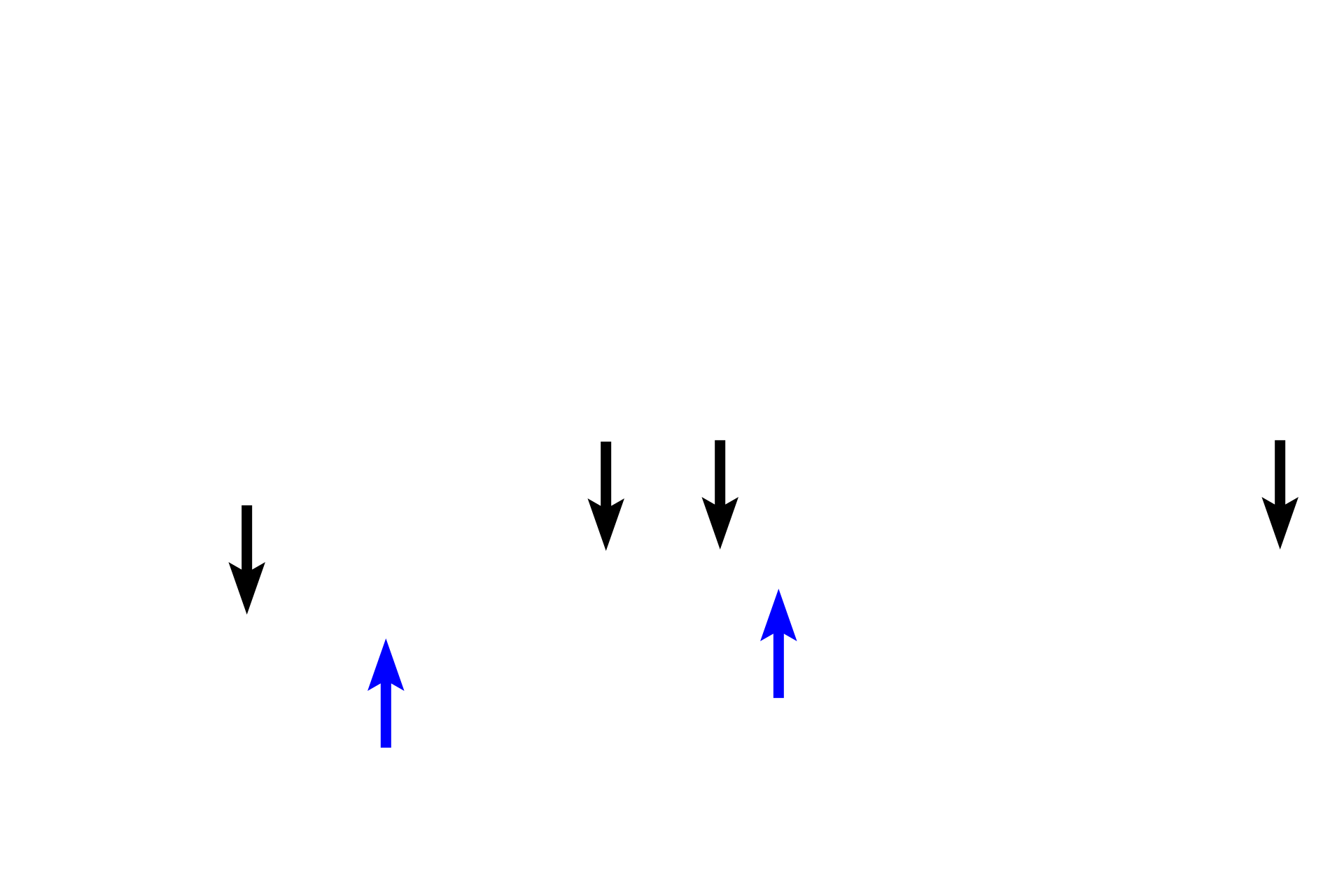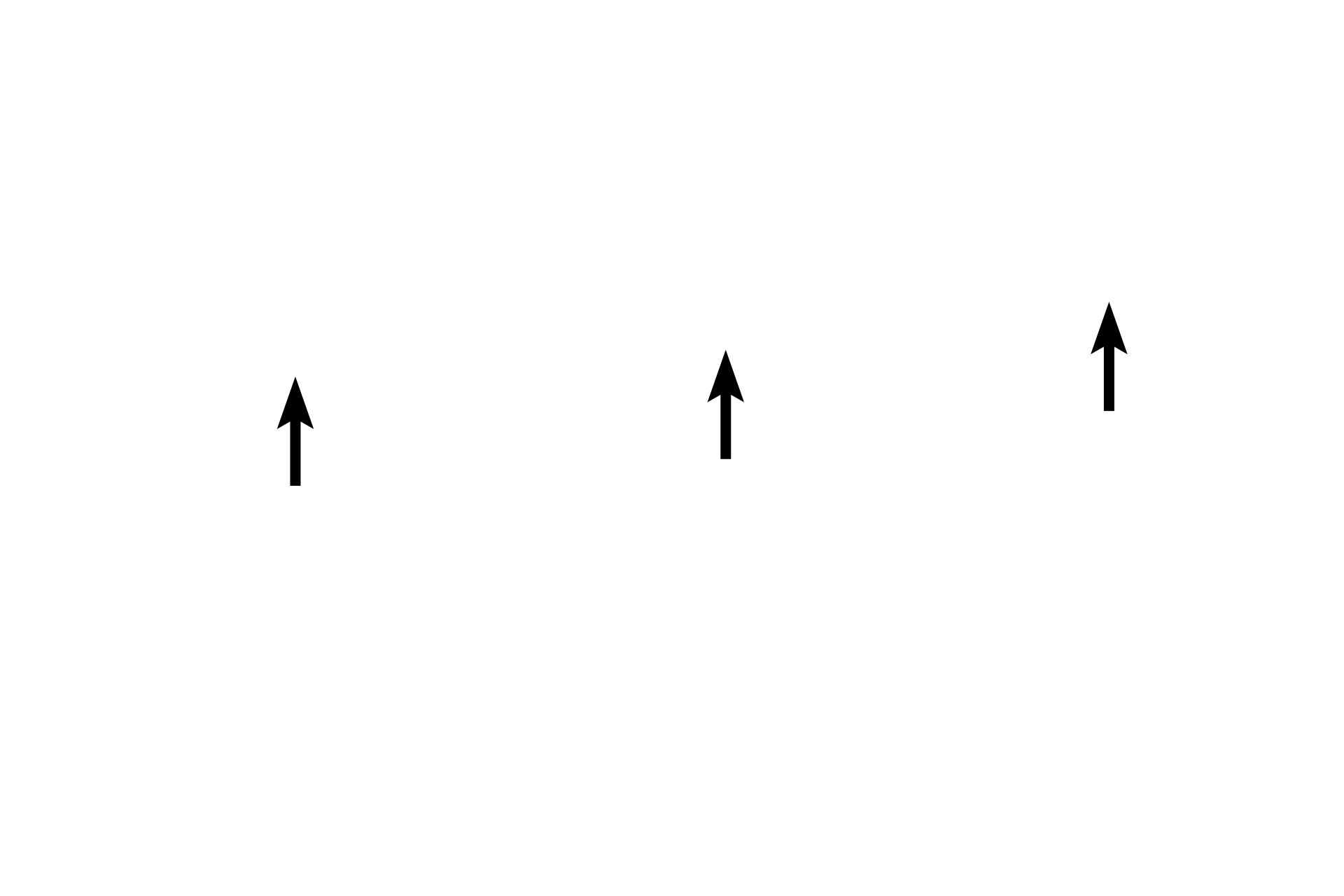
Bone: intramembranous formation
Periosteum, endosteum or embryonic CT (mesenchyme) forms bone by intramembranous ossification. This formation is created de novo, rather than replacing a cartilagenous template of future bone, as does endochondral formation. The embryonic flat bone (fetal skull) shown here is composed of spongy, woven bone and was formed by mesenchymal cells differentiating into osteoblasts. 10x

Spongy, woven bone >
At future primary centers of ossification, mesenchymal, multipotential cells become osteoblasts by aggregating, rounding up and beginning to secrete bony matrix. The spongy woven bone these osteoblasts form is the beginning of intramembranous ossification in the fetus.

Endosteum >
The surface of the spicule is covered by a single layer of cells. In areas where bone is being deposited, osteoblasts (black arrows) are present. In areas where neither deposition or resorption is occurring, the spicule is covered by flattenend lining cells (endosteal cells).

Periosteum >
Periosteum surrounding flat bones appears before formation of the inner and outer tables lying adjacent to them. The periosteum will contribute to the formation of the tables. Periosteum on the outer surface of flat bones will be called pericranium (blue arrows) while that on the inner surface contributes to dura mater (black arrows). The brain lies immediately beneath this image

Skin >
The developing skin with associated hair follicles is visible in the upper portion of the image.

- Hair follicles
The developing skin with associated hair follicles is visible in the upper portion of the image.

Skeletal muscle >
A thin layer of embryonic skeletal muscle underlies the skin.

Next image
The next image is similar to the area in the rectangle.